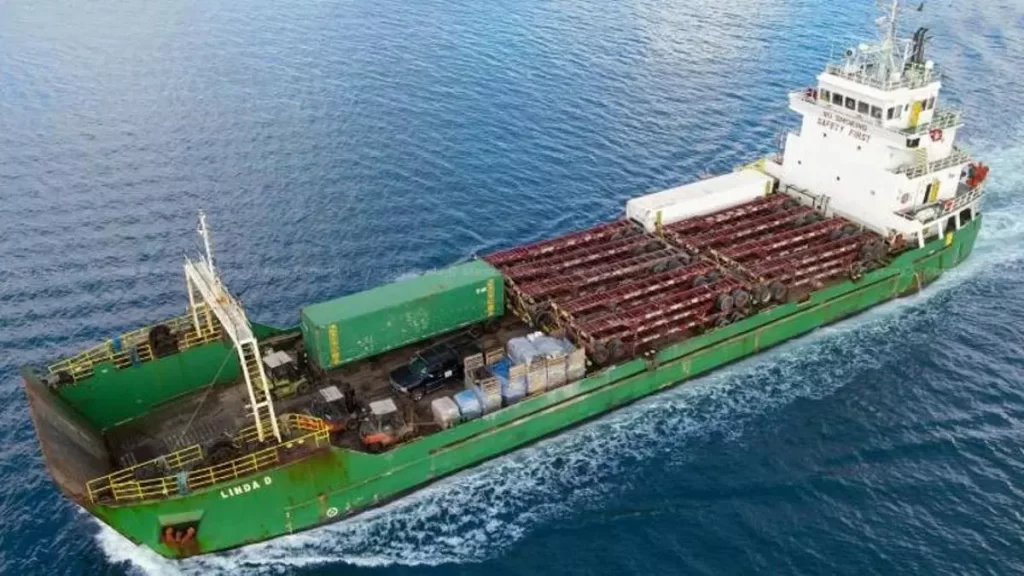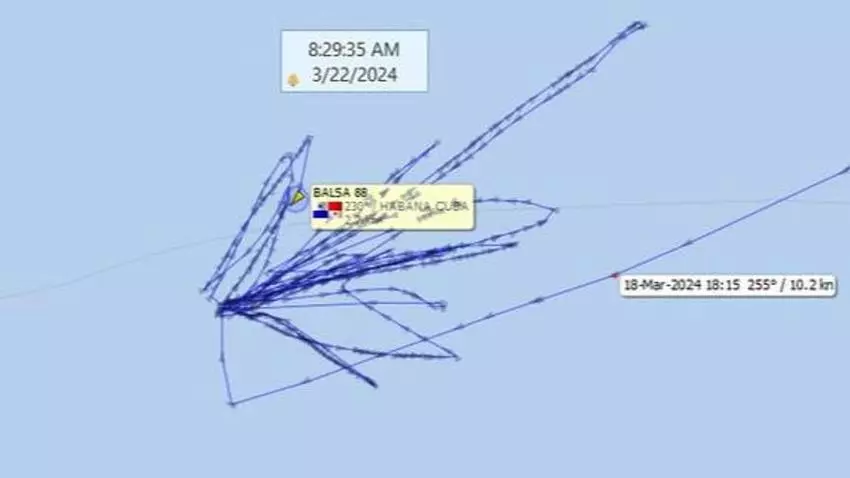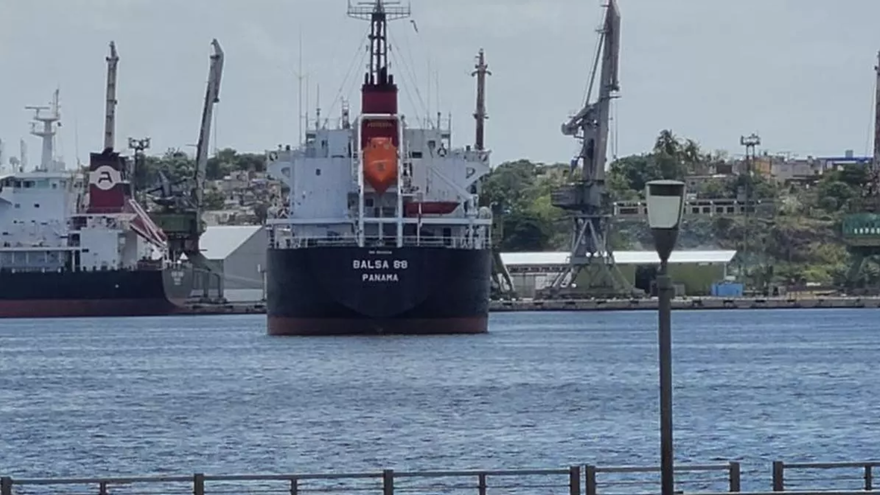
![]() 14ymedio, Madrid, 10 April 2024 — The Balsa 88 and the Federal Nagara, two freighters that have spent weeks circling the Island, finally arrived in Havana on Tuesday. Both were part of the group of ships that could not enter the port due to non-payments, according to the first Deputy Minister of Foreign Trade and Foreign Investment, Oscar Pérez-Oliva Fraga, who last Thursday blamed the financial consequences of the US embargo for the delay.
14ymedio, Madrid, 10 April 2024 — The Balsa 88 and the Federal Nagara, two freighters that have spent weeks circling the Island, finally arrived in Havana on Tuesday. Both were part of the group of ships that could not enter the port due to non-payments, according to the first Deputy Minister of Foreign Trade and Foreign Investment, Oscar Pérez-Oliva Fraga, who last Thursday blamed the financial consequences of the US embargo for the delay.
Under the Panamanian flag, according to the ship-monitoring websites, the Balsa 88 carries a load of diammonium phosphate, a type of highly concentrated fertilizer suitable for all types of crops, from Norfolk (Virginia, USA). The ship left that port on March 14 and arrived in Cuba on March 18. From that day until it docked on Sunday, April 7, it made countless turns around the Island, as can be seen in the zigzag line of its route in the last few weeks.

This is one of three ships coming from the United States that have recently arrived on the Island. It is joined by the Deneb, which, under the flag of Antigua and Barbuda, was en route from Wilmington (North Carolina) to Mariel in mid-March, and the Linda D, a very special case.
This ship, also under a Panamanian flag, constantly enters and leaves Miami for Mariel and is, according to experts, the cargo ship with a landing ramp that brings cars imported from the United States. As of April 1, the Linda D had already made 21 trips on this route, and yesterday, Tuesday, April 9, it again left loaded for Cuba, where its arrival is expected on Thursday the 11th.
According to the most recent data from the US-Cuba Trade and Economic Council, provided on Monday, April 8, the United States exported $4,983,708 in new vehicles to Cuba in February, in addition to $109,500 in used vehicles and $2,881 in special purpose vehicles. The figure is increasing sharply, since in January the volume of sales in new cars was $3,071,000 and less than $10 million in all of 2023, the year in which this type of export began to be authorized under license from the Department of the Treasury.
Unlike the ships that bring food, fertilizer and fuel to Cuba, the Linda D does not depend on the Cuban Government’s finances, but on those of the individuals who import the vehicles and pay their bills, and that’s why it comes and goes without setback. The Federal Nagara arrived in Havana Bay this Tuesday, under the flag of the Marshall Islands, loaded with 40,000 tons of grain from Argentina. The ship arrived on February 19 and has spent almost twenty days turning in circles in front of the Island, presumably also due to the lack of money to make the payment. Its twin, the Federal Churchill, under the same flag, coming from the port of La Plata, carries another 44,000 tons of grain.

Since February 25, the Eco Fleet, loaded with 260,000 barrels of diesel purchased from Tunisia, has been turning around the coast of Havana since February 25, without being able to enter, and it’s not the only one that has been in that situation. On March 22, the count went up to nine ships, if the previous ones are joined by the bulk carriers Eco Tide and Hydra Down, in addition to some others that are on hold. The incessant movement of smaller tankers to supply the Lidio Ramón Pérez thermoelectric plant of Felton is also observed in the bay of Nipe (Holguín). On Tuesday, 165,000 tons of fuel were sent on board the Petion, loaded in Venezuela, the Delsa, the Lourdes and the Mariann VV, all of them from Matanzas.
Last Thursday, the authorities addressed the situation of the ration system’s basic family basket in Miguel Díaz-Canel’s new program. On that occasion, they argued that the embargo measures forced them to keep the ships standing in front of the port while waiting to gather the necessary money to make payments that would be much lower under the usual conditions of international trade. “For relocating products that, purchased in the United States, would mean a lower cost, the country has had to pay an additional 19 million dollars in 2023,” said Pérez-Oliva.
American businessmen can sell to Cuba with a license from the Treasury Department as long they are paid in advance and in cash, due to the regime’s debt history, its financial situation and the impossibility of accessing international credits – for the same reasons.
Translated by Regina Anavy
____________
COLLABORATE WITH OUR WORK: The 14ymedio team is committed to practicing serious journalism that reflects Cuba’s reality in all its depth. Thank you for joining us on this long journey. We invite you to continue supporting us by becoming a member of 14ymedio now. Together we can continue transforming journalism in Cuba.
